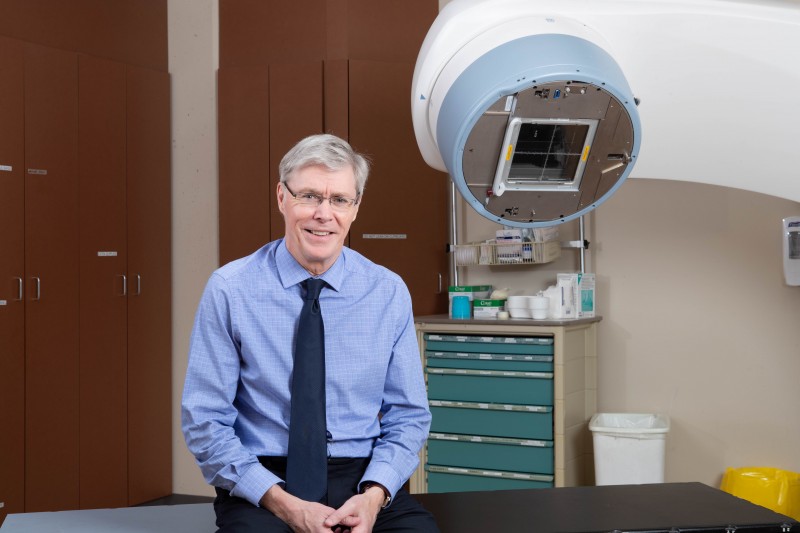Radiation Therapy May Not Be Needed for Early-Stage, Low-Risk Breast Cancer Patients
 According to new research, some women with early-stage, low-risk breast cancer may not need radiotherapy after breast conserving surgery. The research, led by McMaster University, BC Cancer, Hamilton Heath Sciences, and the University of British Columbia and published in The New England Journal of Medicine, shows women 55 or older with a specific subtype of Stage 1 breast cancer can be effectively treated with just surgery and endocrine therapy.
According to new research, some women with early-stage, low-risk breast cancer may not need radiotherapy after breast conserving surgery. The research, led by McMaster University, BC Cancer, Hamilton Heath Sciences, and the University of British Columbia and published in The New England Journal of Medicine, shows women 55 or older with a specific subtype of Stage 1 breast cancer can be effectively treated with just surgery and endocrine therapy.
Women with early breast cancer who have breast conserving surgery typically receive radiation to the breast daily for several weeks to reduce the risk of cancer returning in the breast. However, radiation can be costly, inconvenient for the patient and associated with both short-term side effects – such as tiredness and skin irritation – and long-term side effects – such as breast pain and thickening of the breast tissue, which can affect how the breast looks and a woman’s quality of life.
The subtype of breast cancer that researchers focused on – luminal A – represents up to 60% of all breast cancers diagnosed annually and is associated with a lower risk of recurrence. With this new approach, a significant proportion of women can be spared of radiation after breast conserving surgery. Eliminating the need for this group to receive radiation will allow women to avoid the side effects of therapy and can add capacity back into the public health care system, permitting increased access for those who require radiation therapy more urgently.
“This is a major advance in our treatment approach for breast cancer. With a better understanding of the molecular biology of breast cancer we can now identify women who do not need radiation,” said Tim Whelan, lead author of the study, a professor in the Department of Oncology at McMaster University and the Canada Research Chair in Breast Cancer Research. Whelan is also a radiation oncologist at Hamilton Health Sciences.
The study was coordinated by the Ontario Clinical Oncology Group at Hamilton Heath Sciences, and followed 500 women from across Canada who were 55 years of age or older, had undergone breast conserving surgery, and their tumors were smaller than two centimeters without cancer in the lymph nodes under the arm. The growth rate of a woman’s tumor was assessed with a simple, low-cost and made-in-BC version of a molecular test called Ki67, which provided a quantitative measure that the participant’s cancer was low-risk. In the trial, the luminal A sub-type was determined by a low reading on the Ki67 test plus the tumor having both the estrogen and progesterone receptors. If determined to be low risk, women were enrolled in the trial where they received standard endocrine therapy but not radiation. Radiation therapy is standard practice, so participants were monitored through regular clinical exams and annual mammograms. When planning the study, the investigators predicted that the risk of developing recurrence in the breast would be very low at five years.
At five years post-surgery, researchers found the recurrence of cancer in the breast was only 2.3% without radiotherapy. This was roughly comparable with a 1.9% risk of developing a new breast cancer in the other, untreated breast.
“I want to thank all the women who had the courage to sign up for this study. Their courage has led to a chance to improve care for many other women who we now know confidently will not need to undergo radiation therapy,” said Torsten Nielsen, clinician-scientist at BC Cancer and professor of Pathology & Laboratory Medicine, University of British Columbia. Nielsen developed the version of the Ki67 molecular test used in this clinical trial.
“The Ki67 test uses an inexpensive and easy method called immunohistochemistry, and can replace more costly and complicated testing methods. Ki67 uses an antibody applied to tissues and a simple chemical reaction to identify how fast tumors are growing. The test is affordable, open source and can be made available at hospital labs around the world,” said Nielsen.
The overall risk of cancer recurrence following breast-conserving surgery has decreased in recent years because of regular mammogram screening, improved surgical techniques and better systemic treatments, the authors say.
“We are increasingly able to individualize care for patients with cancer. Adding the simple and affordable Ki67 test allows us to identify patients who can avoid the inconvenience and side effects of breast radiation. This, indirectly, helps to ensure resources are directed to patients who benefit from radiation therapy,” said Sally Smith, Western Canada Regional lead for the study and radiation oncologist at BC Cancer - Victoria.
The hypothesis for the current publication was based on findings from a Toronto-BC study that was coordinated by Anthony Fyles and David McCready, of the Princess Margaret Cancer Centre. They found that adjuvant radiotherapy can reduce local recurrence of breast cancer, and that patients with favorable clinical features have a low risk. In an effort to further classify patient risk of recurrence who might avoid radiotherapy, and with support from Canadian Institutes of Health Research (CIHR), a translational study published in 2015 led by Fyles and first-authored by Fei-Fei Liu utilized the Ki67 molecular marker to identify a low-risk group of luminal A breast cancer patients. These findings came from a retrospective analysis and required clinical validation, leading to the current publication indicating that they can potentially be spared of radiotherapy.